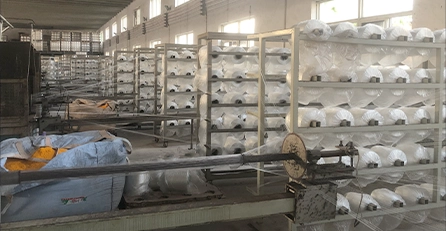vacuum hose
The Importance and Functionality of Vacuum Hoses in Automotive Systems
In the intricate world of automotive engineering, vacuum hoses play a crucial role that is often overlooked by the average car owner. These seemingly simple tubes serve as the unsung heroes of a vehicle's performance and efficiency. This article aims to delve into the purpose, types, and maintenance of vacuum hoses, highlighting their significance in the overall functioning of a vehicle.
Understanding Vacuum Hoses
Vacuum hoses are flexible tubes made from rubber or plastic that transport vacuum pressure created by the engine. This pressure is essential for various vehicle functions, including the operation of the braking systems, fuel vapor systems, and the control of engine components. By transferring vacuum pressure from areas of high concentration to areas of low concentration, these hoses help facilitate important processes that keep the car running smoothly.
Key Functions of Vacuum Hoses
1. Brake Systems One of the most critical applications of vacuum hoses is in the brake system. Many vehicles employ a power brake booster that utilizes vacuum pressure to reduce the effort needed to engage the brakes. When a driver presses the brake pedal, the vacuum hose passes the engine's vacuum to the brake booster, aiding in the application of the brakes. Without a functional vacuum hose, the braking system would be significantly less effective, making it more challenging and unsafe for drivers to stop their vehicles.
2. Emissions Control Vacuum hoses also play an integral role in managing vehicle emissions. They help direct the flow of vapors from the fuel tank to the engine, where they can be re-burned rather than released into the atmosphere. This process is vital for meeting environmental standards and minimizing the ecological impact of automotive operations.
3. Engine Functionality Various engine components, such as the intake manifold and carburetor or throttle body, rely on vacuum pressure for accurate functioning. Vacuum hoses help regulate air flow and fuel mixtures, contributing to optimal engine performance. A malfunctioning vacuum hose can lead to reduced fuel efficiency, decreased power, and increased emissions.
vacuum hose

Types of Vacuum Hoses
There are several types of vacuum hoses used in vehicles, each designed for specific applications. The most common ones include
- Standard Vacuum Hoses Typically made from rubber or silicone, these hoses are used in most vacuum applications within an engine. - PCV Hoses These are specialized hoses designed for the Positive Crankcase Ventilation system, which reduces harmful emissions by recirculating gases back into the engine. - Brake Booster Hoses These are specifically designed to handle the pressures associated with braking systems, often reinforced to prevent collapse under vacuum.
Maintenance and Troubleshooting
Maintaining the integrity of vacuum hoses is essential for optimal vehicle performance. Regular inspections for cracks, leaks, or disconnections can prevent larger mechanical failures. Symptoms of faulty vacuum hoses may include rough idling, decreased fuel efficiency, warning lights on the dashboard, or a noticeable decrease in braking performance.
Additionally, when replacing vacuum hoses, it's critical to ensure that the new hoses are the correct size and type for the application. This will not only maintain the vacuum system's efficiency but also enhance the overall safety of the vehicle.
Conclusion
In conclusion, vacuum hoses are essential components of a vehicle’s operational systems. Their role in braking, emissions control, and engine functionality underscores their importance in automotive design. By understanding and maintaining vacuum hoses, vehicle owners can ensure a smoother, safer driving experience. As with any automotive parts, regular checks and timely replacements can make the difference between a reliable vehicle and unexpected breakdowns.
-
Welded Wire Mesh Panel: Durable, Versatile, and AffordableNewsJul.28,2025
-
Top Quality Oxy Acetylene Hoses for Sale Fit for Welding DemandsNewsJul.28,2025
-
The Future of Pneumatic Air Tubes in IndustryNewsJul.28,2025
-
Superior and Reliable LPG Hose Pipe Solutions for Every NeedNewsJul.28,2025
-
Exceptionally Durable and Versatile Premium Braided PVC TubingNewsJul.28,2025
-
Best Adapters for Connecting Garden Hose to PVC Pipe ConnectionsNewsJul.28,2025














